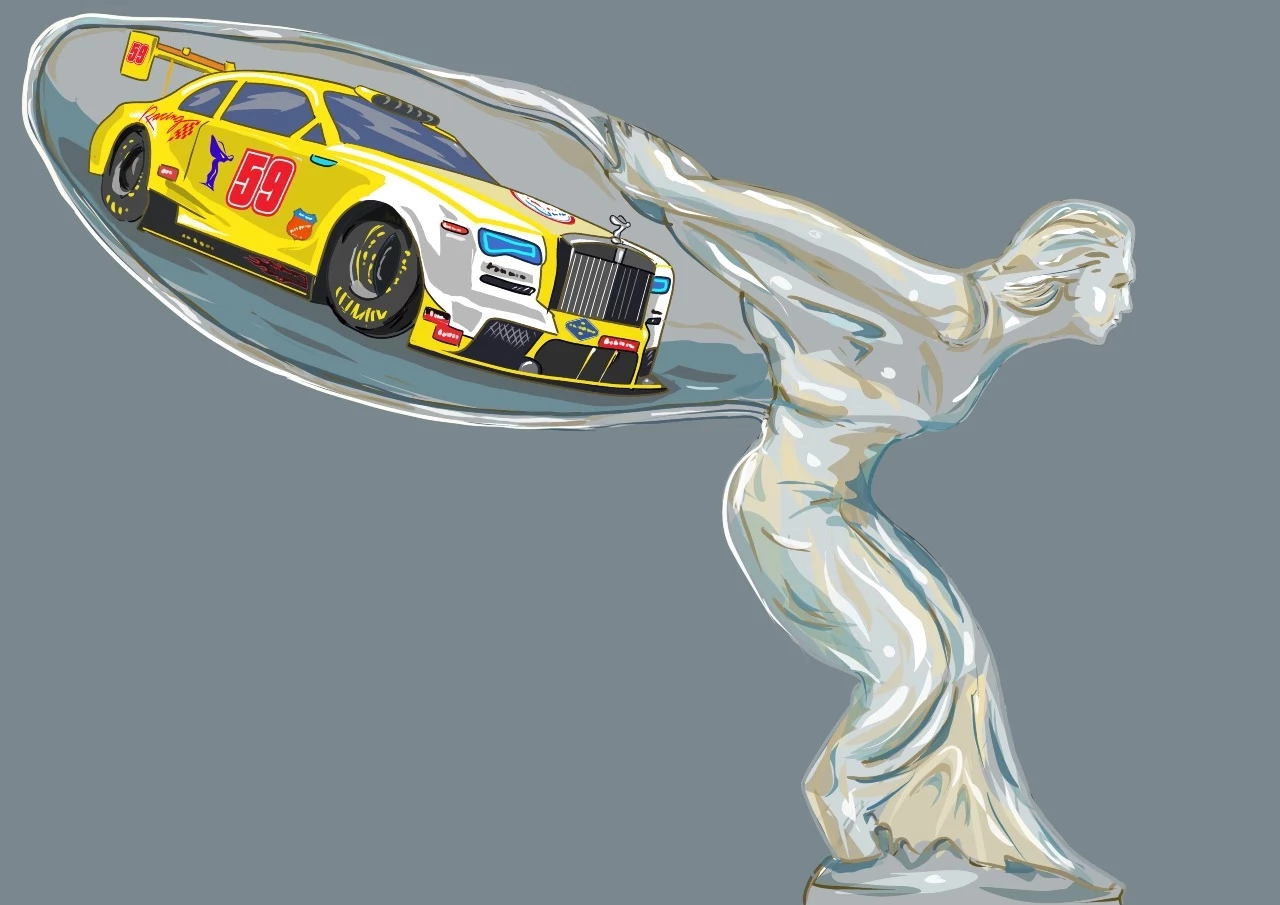To Race Or To Not Race?
That Is The Question.


SPRING HAS DESCENDED upon the sun-dappled streets of Monaco, where the air hums with the promise of the Grand Prix. The Principality is alive with anticipation: marketing savants devise ever more ingenious ways to capitalize on the adage “Win on Sunday, sell on Monday,” while sponsors polish their brands for one of the year’s most dazzling spectacles. For those entwined in this high-octane world—drivers, engineers, executives—the race is not merely a contest of speed but a golden opportunity to transform a single weekend into a windfall of profit and prestige.
All, that is, except one. There exists a carmaker for whom the very notion of horsepower and torque was once deemed so gauche that its engineers shrugged them off as merely “adequate”—until regulators, unimpressed by such aristocratic nonchalance, demanded specifics. This is a company that would sack a copywriter for daring to whisper “sportiness” in a brochure, a firm that, from its earliest days, proclaimed its creations the “best cars in the world” with the serene confidence of a monarch issuing a decree. For Rolls-Royce, the Monaco Grand Prix—and indeed all racing—might as well be a quaint diversion for lesser mortals.
The origin story of Rolls-Royce reads like a serendipitous chapter from a Victorian novel, a tale that elicits a knowing smile at life’s improbable alignments. Charles Stewart Rolls, a dashing London aristocrat with a flair for salesmanship, seemed destined never to cross paths with Henry Royce, the meticulous son of a miller from the industrial sprawl of Manchester. Yet fate, in the form of a mutual acquaintance named Henry Edmunds—a friend to Rolls and a shareholder in Royce’s fledgling motor company—intervened. On a spring evening in May 1904, over dinner at the Midland Hotel, two men divided by class and temperament found common ground in their reverence for mechanical precision. Rolls, at 27, brought charisma and connections; Royce, at 41, offered an engineer’s relentless pursuit of perfection. On paper, they were an odd pair. In practice, their union became a masterclass in synergy.
From this unlikely partnership emerged a legacy that defied the conventions of an industry obsessed with speed and rivalry. The Silver Ghost, unveiled in 1906, was not merely a car but a rolling manifesto—an object of such unanimous acclaim that it set a standard not for performance but for “waftability,” a term that evokes the effortless glide of a cloud across a windless sky. Competition? Perish the thought. Rolls-Royce eschewed the racetrack, preferring to chase an ideal of serene luxury that left rivals scrambling to keep up with lap times rather than craftsmanship.
This philosophy was so deeply ingrained that the company’s most notable brush with racing lore owes more to a boozy dinner than any corporate strategy. In the late 1970s, three Frenchmen—Thierry de Montcorgé, Christophe Pelletier, and Jean-François Dunac—found themselves deep in their cups, debating the absurd: Why not enter a Rolls-Royce Corniche in the grueling Paris-Dakar Rally? What began as a vinous lark morphed into a quixotic mission. Undeterred by the sheer lunacy of the idea, they grafted a 5.7-liter Chevrolet V8 and a Toyota HJ45 chassis beneath the Corniche’s stately shell. Against all odds, they reached Dakar—dust-caked, triumphant, and utterly unrepentant. Rolls-Royce’s response? A courteous but steely missive from headquarters, requesting that such antics not be repeated. The episode was peak Rolls-Royce: a polite rebuke to the very notion of breaking a sweat.
There are lessons in this saga, ones that resonate beyond the gleaming grilles of Goodwood. First, remain open to the unexpected—a chance meeting, a wild idea, a partnership that defines logic. Second, recognize and revere the strengths of others; when paired with your own, the sum can exceed the parts, proving that 1+1 might indeed yield more than 2. Third, dare to chart a singular course, even when the world races in the opposite direction. And finally, consider the long game: With 70 percent of all Rolls-Royces ever built still purring along today, this is a tale of sustainability as much as splendor.
In Monaco, where the Grand Prix roars to life each spring, the absence of Rolls-Royce on the grid is not a retreat but a statement. While others chase victory laps, this carmaker wafts above the fray—unhurried, unruffled, and unapologetically itself. To race or not to race? For Rolls-Royce, the question answers itself.
The views and opinions expressed herein are the views and opinions of the author and do not necessarily reflect those of The Monegasque™.
Disclosure: The Monegasque™ enhances the editing process with the help of carefully selected AI tools. These tools provide valuable support without taking over the editing process completely, ensuring that the final product is the result of human creativity and expertise augmented by the benefits of enhanced technology. This article is protected under the copyright of The Monegasque™. Unauthorized reprinting, republishing, or rewriting of this content is strictly prohibited without explicit permission from The Monegasque™. Quotations from this material are permissible provided that a direct link to the full article on The Monegasque™ is included.